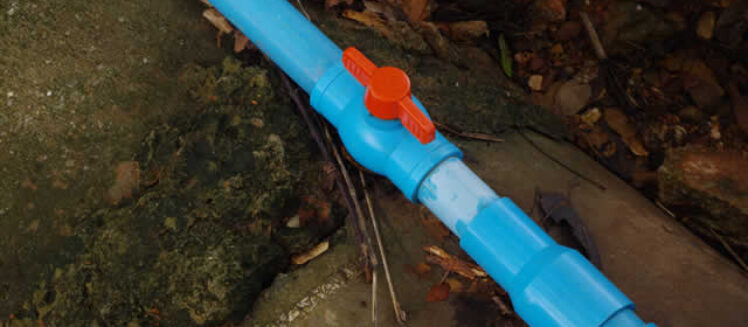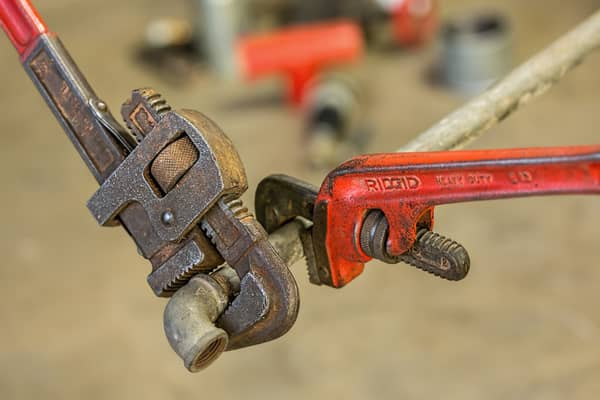This post underneath about Plumbing Basics Every Homeowner Should Know is incredibly enjoyable. You should look it over.

Plumbing is a vital facet of any kind of home, responsible for supplying clean water for alcohol consumption, food preparation, and bathing, as well as removing wastewater securely. Recognizing the fundamentals of home plumbing is vital for each property owner to ensure correct upkeep, troubleshooting, and, if necessary, repairs. In this newbie's overview, we'll cover the fundamental principles of home plumbing to assist you become more familiar with just how it works.
Water Supply System
The water system brings tidy water into your home from a municipal water resource or a personal well. It consists of a major water line that links to your home's plumbing system, generally situated underground. A water meter measures the quantity of water consumed, while a shut-off shutoff allows you to regulate the flow of water right into your home.
Plumbing Fixtures
Plumbing components are devices that provide water to various parts of your home and consist of sinks, faucets, bathrooms, showers, bathtubs, and home appliances such as dishwashers and cleaning makers. Each component is attached to the water system system using pipelines and installations and may have its shut-off valve for upkeep or emergencies.
Water Heater
The water heating system is accountable for home heating water for domestic usage, consisting of showering, cooking, and cleansing. Usual types of hot water heater include tank-type water heaters, tankless (on-demand) hot water heater, and heatpump hot water heater. The water heater is linked to the supply of water system and delivers hot water to plumbing components as required.
Drain System
The drainage system gets rid of wastewater from your home and brings it away to a sewer treatment center or septic tank. It consists of a network of pipes, fittings, and fixtures that deliver wastewater from plumbing components to the primary drain line or septic system. Correct drainage is necessary to stop obstructions, backups, and sewer leakages.
Air flow System
The air flow system helps preserve appropriate atmospheric pressure and stop sewer gases from entering your home. Vent pipes, likewise known as vent stacks, extend from plumbing fixtures to the roofing system, allowing drain gases to get away securely outside. Ventilation pipes also allow air to enter the drainage system, facilitating smooth wastewater flow and preventing suction or vacuum cleaner results.
Typical Plumbing Tools
Having the right tools on hand is vital for carrying out basic plumbing repair services and maintenance tasks. Usual plumbing devices consist of flexible wrenches, monkey wrench, pliers, pipeline cutters, hacksaws, plungers, augers (or drainpipe serpents), and Teflon tape. Having these tools readily offered can aid you deal with minor plumbing concerns successfully.
Fundamental Plumbing Repair Work
While some plumbing repair work may call for expert support, several usual problems can be addressed with standard do it yourself techniques. Understanding exactly how to repair a leaky tap, unblock a drain, change a bathroom flapper, or repair a trickling showerhead can save you time and money on plumbing fixings.
Final thought
Recognizing the fundamentals of home plumbing is vital for every house owner to preserve a secure, practical, and reliable plumbing system. By familiarizing on your own with the water system system, plumbing fixtures, water drainage system, ventilation system, usual plumbing tools, and standard repair work, you can with confidence deal with small plumbing problems and ensure your home's plumbing system operates efficiently.
Plumbing for Beginners: A Comprehensive Guide
If you’re a beginner when it comes to plumbing, don’t worry; you’re not alone. Plumbing may seem intimidating, but with the right knowledge and a little practice, you can handle many common plumbing issues on your own. In this comprehensive guide, we will demystify the world of plumbing for beginners, providing you with the basic knowledge and skills needed to tackle common plumbing problems and even take on some DIY plumbing projects.
The Importance of Basic Plumbing Knowledge for Beginners:
First and foremost, basic plumbing knowledge gives you a solid foundation. It helps you grasp the key concepts and terminology that are essential in this field. By learning the basics, you’ll be able to build upon that knowledge and tackle more complex plumbing tasks in the future.
Having a basic understanding of plumbing also enables you to handle common issues that may arise in your home. Picture this: a leaky faucet or a clogged drain. With some basic plumbing knowledge, you’ll have the confidence to troubleshoot and fix these problems on your own. It saves you from unnecessary expenses and the hassle of waiting for a professional to arrive.
As a beginner, learning the basics of plumbing empowers you to take care of your own home. It gives you a sense of independence and self-reliance. You’ll no longer have to rely solely on professionals for every small issue that pops up. Instead, you can handle many tasks yourself, saving time and money in the process.
Remember, everyone starts as a beginner. Embrace the learning process and take small steps to expand your plumbing knowledge. There are plenty of online resources, tutorials, and even local workshops that talk about plumbing for beginners.
Essential Tools for Plumbing for Beginners
As you start your plumbing journey, having the right tools in your toolbox is crucial. Let’s explore some of the must-have tools:
Adjustable Wrench:
This versatile tool is a staple in any plumber’s toolbox. It allows you to tighten or loosen nuts and bolts of various sizes. Make sure to have an adjustable wrench with a comfortable grip.
Pipe Wrench:
A pipe wrench is specifically designed for gripping and turning pipes. It has serrated jaws that provide a strong grip, making it easier to loosen or tighten threaded pipes and fittings.
Plunger:
The plunger is a simple yet effective tool for clearing clogged drains and toilets. It creates suction when you push and pull, helping to dislodge blockages. Keep a good-quality plunger handy for those unexpected clogs.
Pipe Cutter:
When it comes to cutting pipes, a pipe cutter is your go-to tool. It creates clean, precise cuts without damaging the pipe. Look for a pipe cutter that can handle the pipe sizes you’re working with.
Hacksaw:
A hacksaw is useful for cutting through pipes, screws, and other materials. It’s a versatile tool that can handle different cutting tasks. Remember to use a blade suitable for cutting metal.
Tape Measure:
Accurate measurements are crucial in plumbing. A tape measure allows you to measure pipe lengths, distances, and dimensions accurately. Opt for a sturdy tape measure that extends a good length.
Pliers:
Pliers come in handy for various tasks, such as gripping, bending, and cutting. Slip-joint pliers with adjustable jaws are great for gripping pipes, nuts, and bolts.

We had been introduced to that article on How Does the Plumbing Work in Your Home? through an acquaintance on a different web blog. Sharing is good. One never knows, you may very well be doing someone a favor. I value your readership.
Click Here